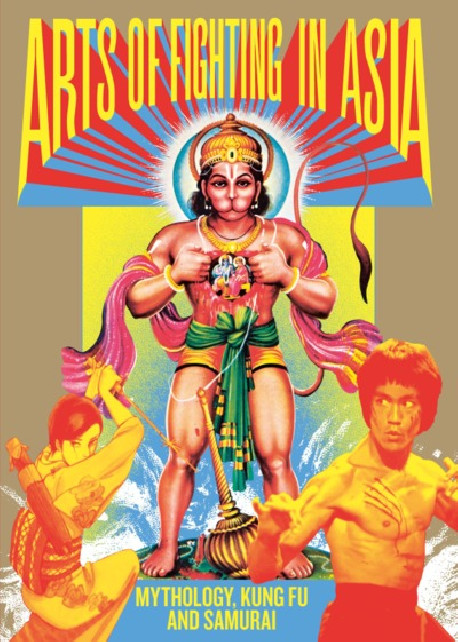Aucun produit
Produit ajouté au panier avec succès
Il y a 0 produits dans votre panier. Il y a 1 produit dans votre panier.
Afin d'optimiser votre expérience de navigation, ce site utilise des cookies. En navigant sur ce site, vous en acceptez l'usage.

Editions Bilingues & inter.
- Nouveautés
- Catalogue d'exposition
- Sélection Fêtes
- Prix réduits
- Idées Cadeaux
- Editions Bilingues & inter.
- Livres d'art pour enfants
- Histoire de l'Art
- Peinture
- Architecture
- Sculpture
- Dessin Gravure
- Photographie
- Art contemporain
- Arts Décoratifs Design
- Techniques des Arts
- Critique
- Beaux livres
- Civilisations
- Revues partenaires

Arts of fighting in Asia - Mythology, Kung fu & Samourai
From the battles between deities depicted in Hindu-Buddhist art to Japanese sword-fighting films and Chinese kung-fu movies, the martial arts of Asia have the power to enthrall. Their practice cannot be reduced to an expression of violence. Far from being simply a physical confrontation, they imply tremendous mental discipline.
| Référence | 9782711878765 |
| Artiste-Genre | Arts of fighting in Asia |
| Editeur(s) | Musée du Quai Branly / RMN |
| Format | Softcover |
| Nb. de pages | 272 |
| Langue | English |
| Dimensions | 260 x 185 |
| Date parution | 2021 |
| Musée | Musée du Quai Branly, Paris |
Exhibition Catalogue Arts of fighting in Asia - Mythology, Kung fu & Samourai, presented at Quai Branly Museum, Paris (28 sept. 2021 - 16 jan. 2022).
Arts of Fighting in Asia considers these martial arts in their spiritual dimension, and from the point of view of a history interwoven with numerous legends and fictions.
This catalogue surveys the political, cultural, and philosophical contexts within which the various styles evolved. Through a juxtaposition of films and works both ancient and contemporary, it sheds fresh light on this vast heritage that has entered popular culture all over the world.
What are the origins and specific characteristics of Asian martial arts? With over 300 ancient and contemporary works, and through a gallery of historic figures and fictional heroes, the exhibition retraces the history of martial art techniques. An exhibition circuit interspersed with references to popular art and culture, particularly cinema, with the emblematic Bruce Lee.
The exhibition starts with the representation of combat in Hindu/Buddhist art, both as an image of the power of the military elite that shaped them but, above all, as a metaphor for freedom and knowledge. The combat is internal. The exploration continues within Asian martial arts schools: although they draw on military knowledge, they also form part of very ancient systems of representation of the body, nature and the world. In China, the Shaolin monks use the breathing of Buddhist meditation to work on their physical and mental strength; Japanese martial arts have their origins in the ancient warfare techniques of the Samurai, steeped in Buddhist Zen.
By gradually moving away from their role in warfare, martial arts have become more theoretical and have strengthened their message, becoming what could now be known as methods for personal physical and spiritual development
Produits déjà vus






